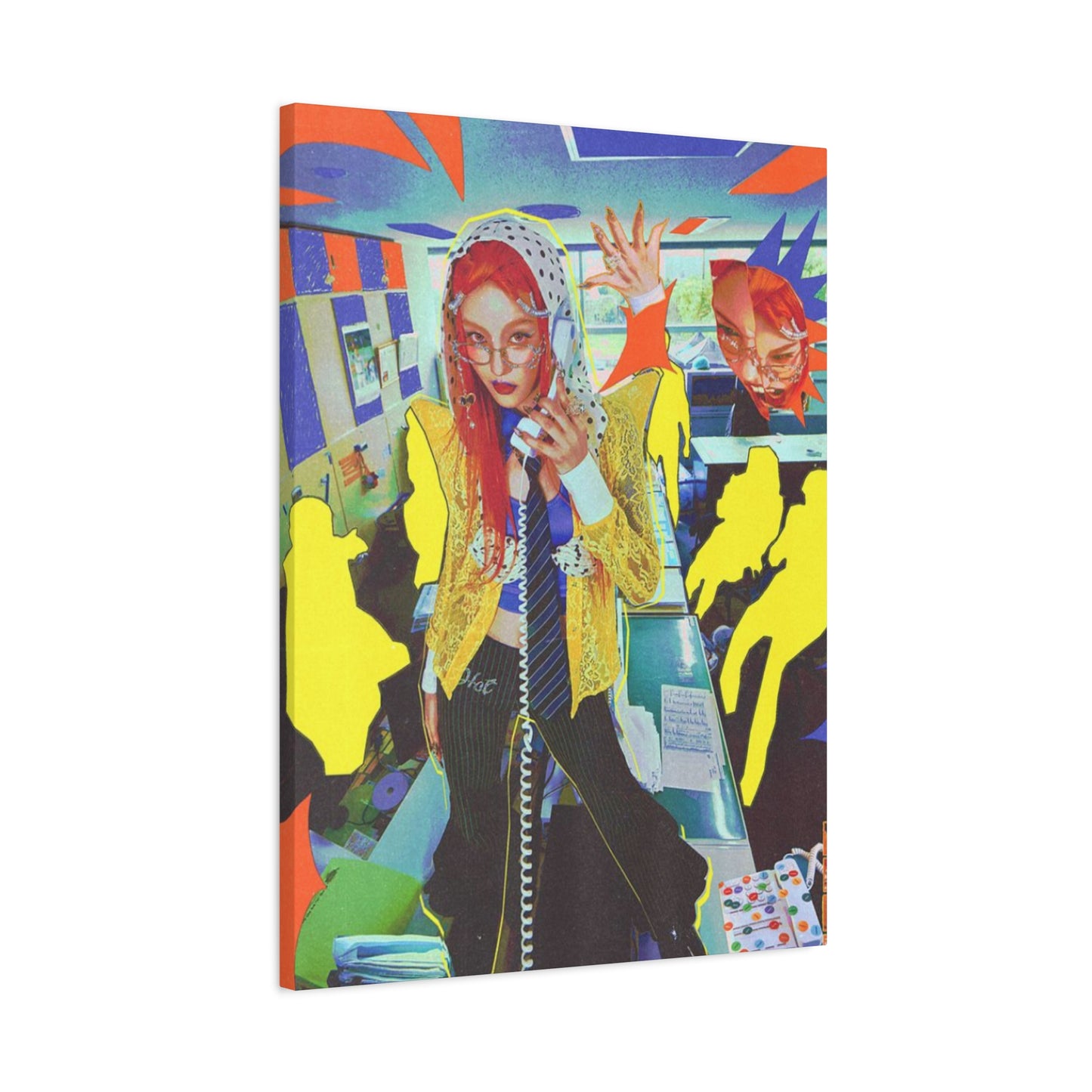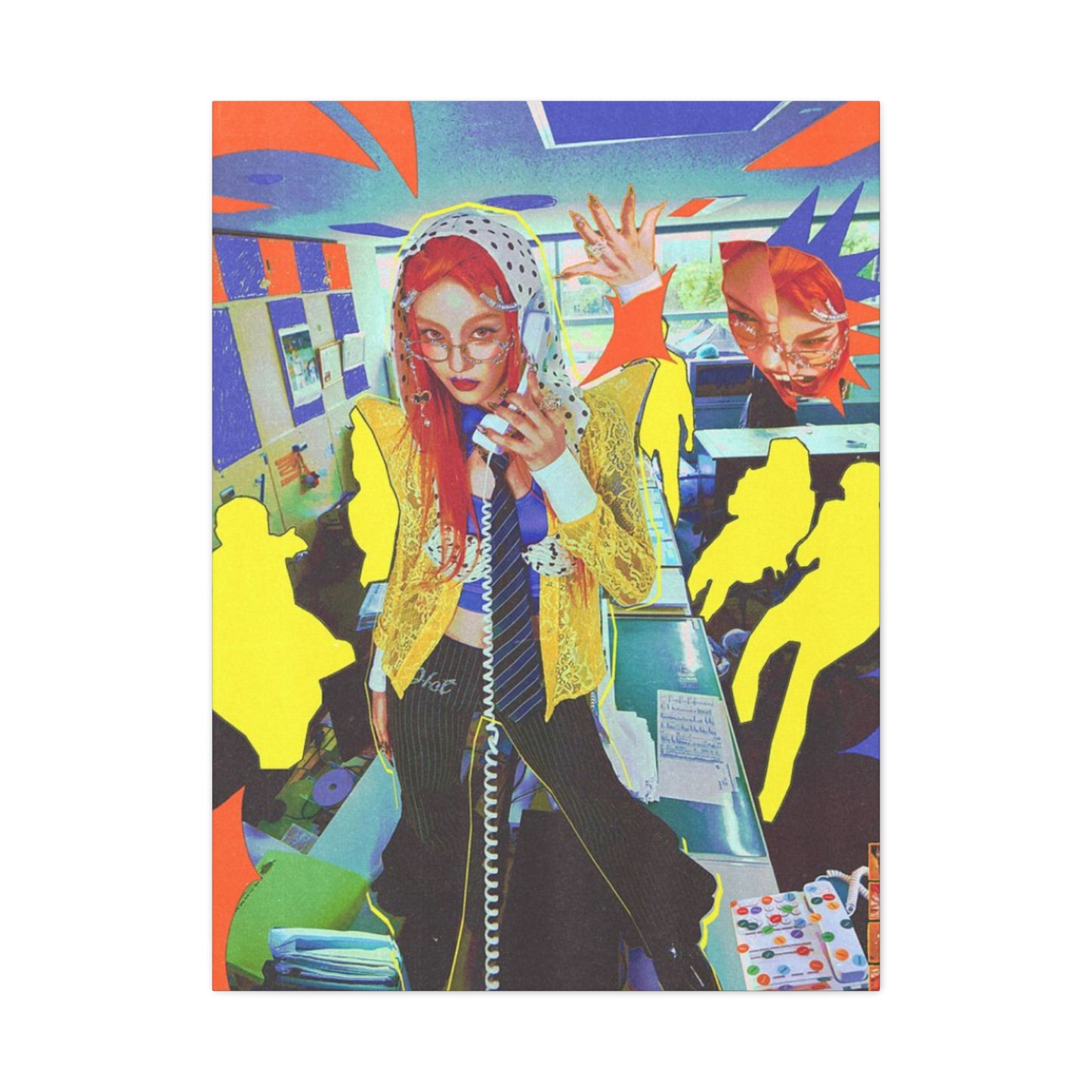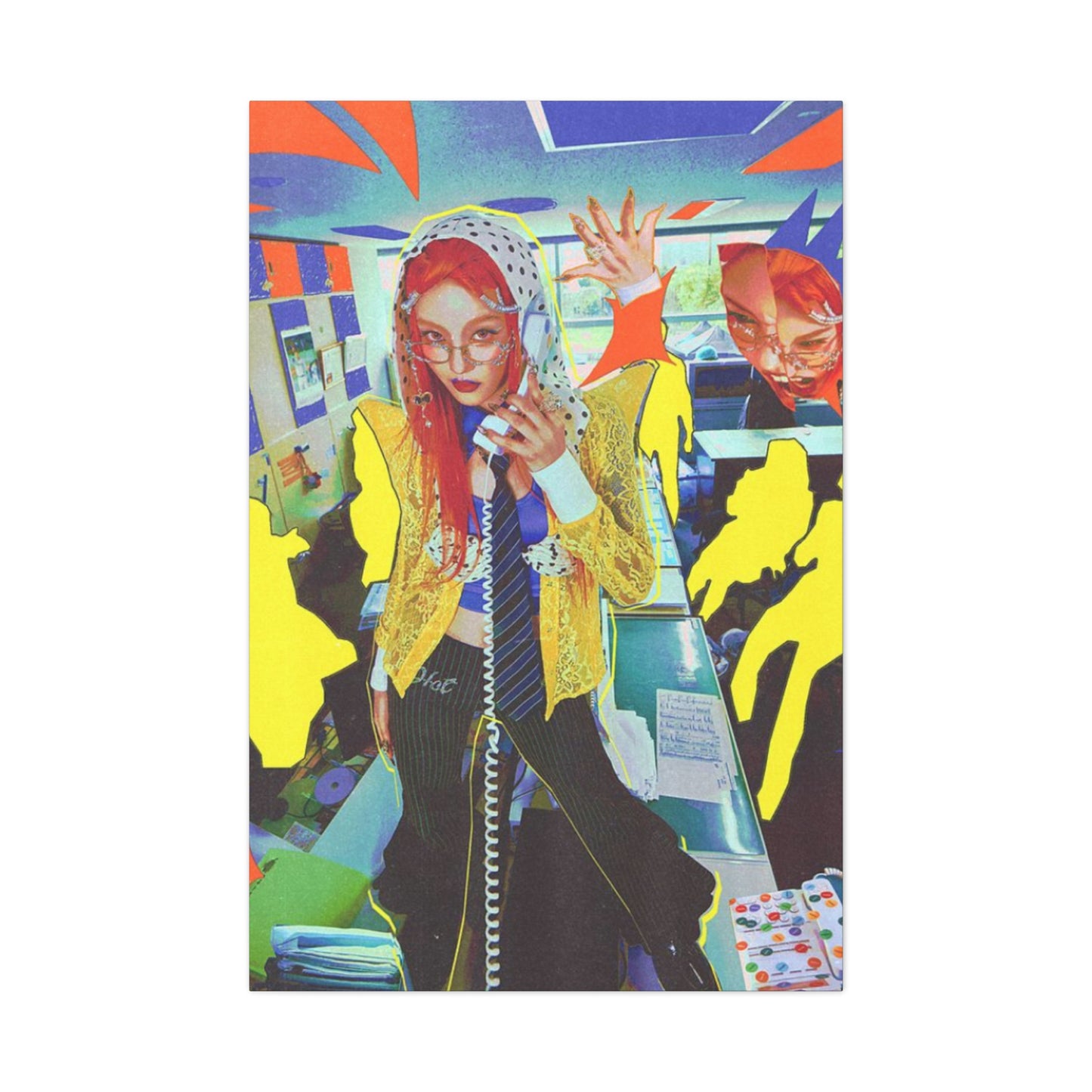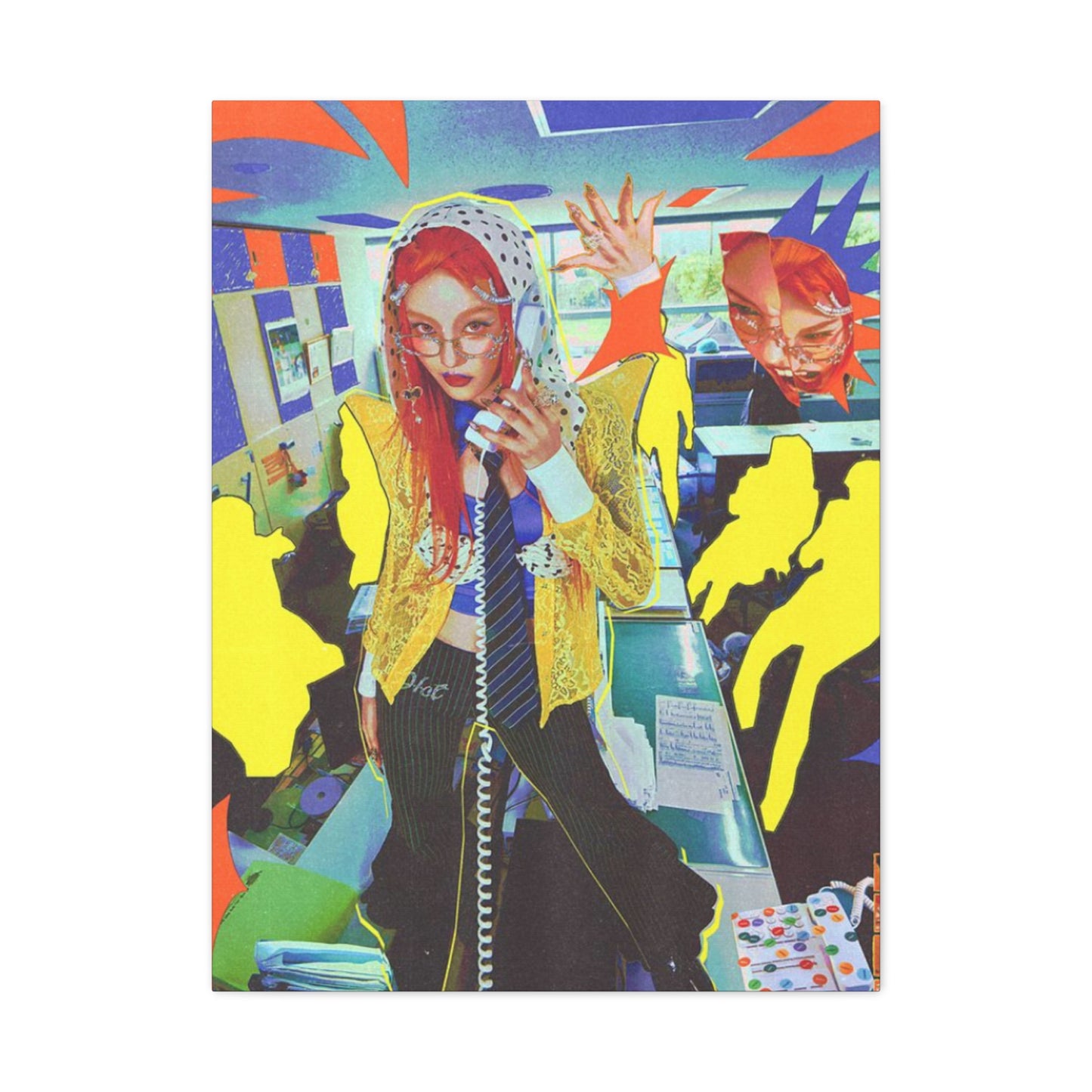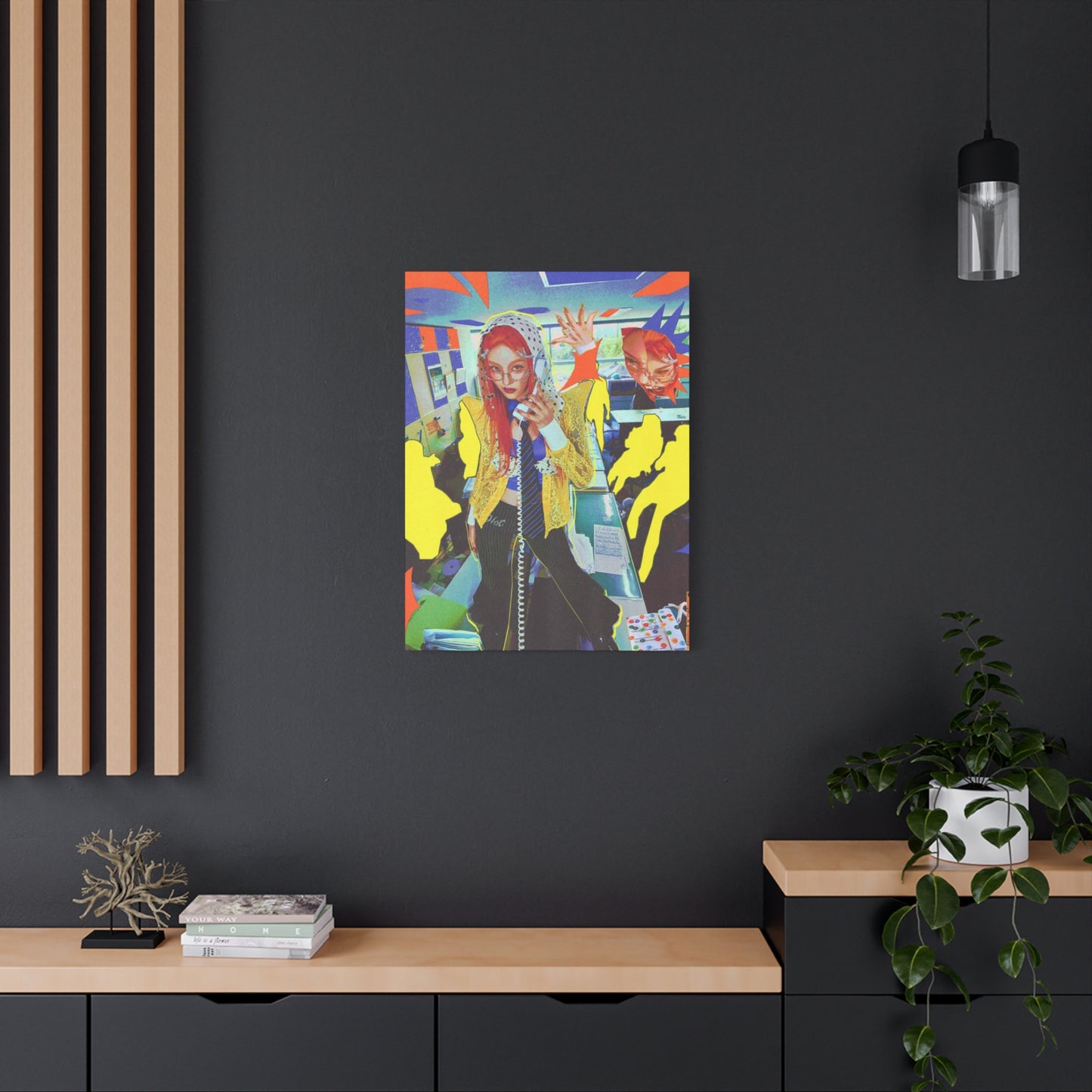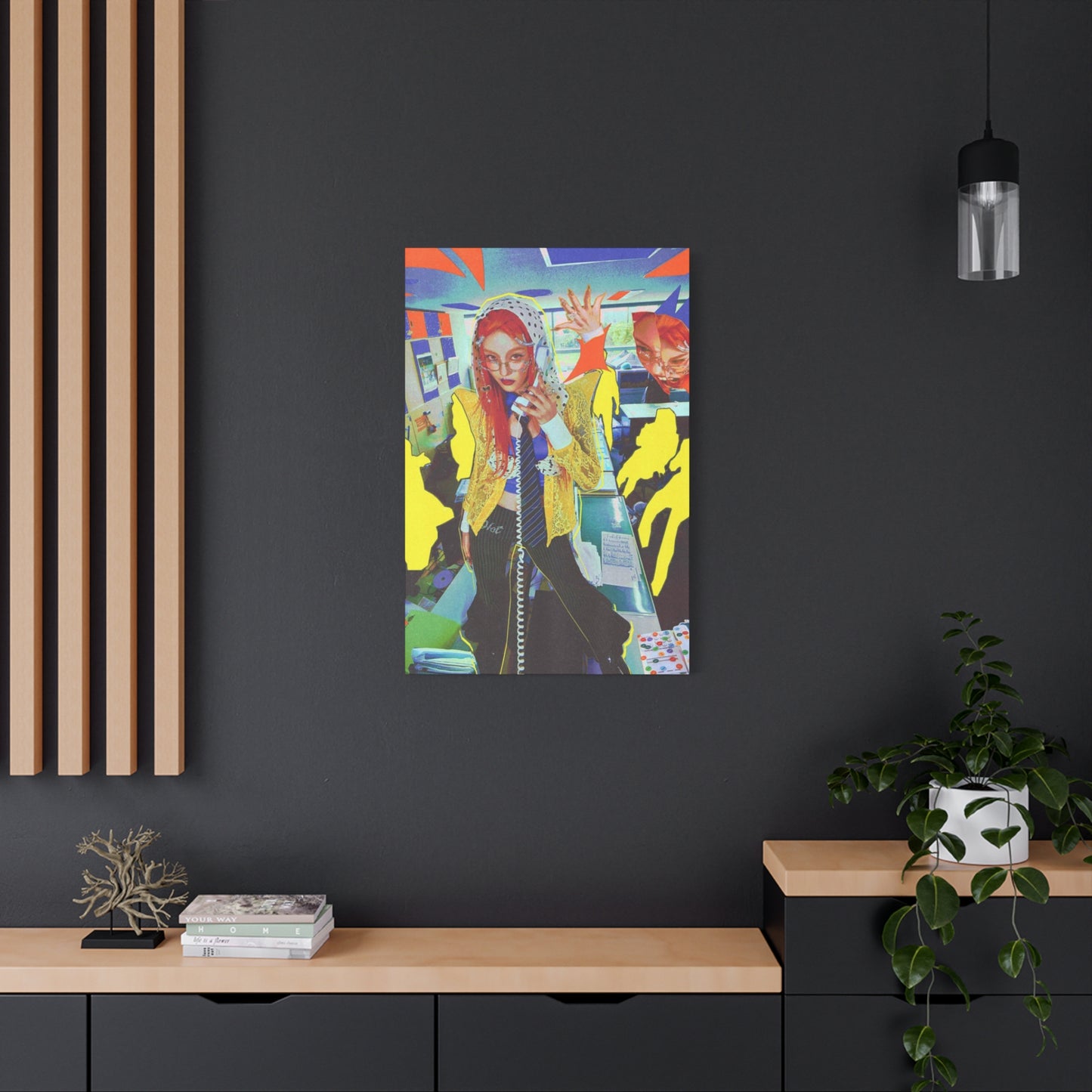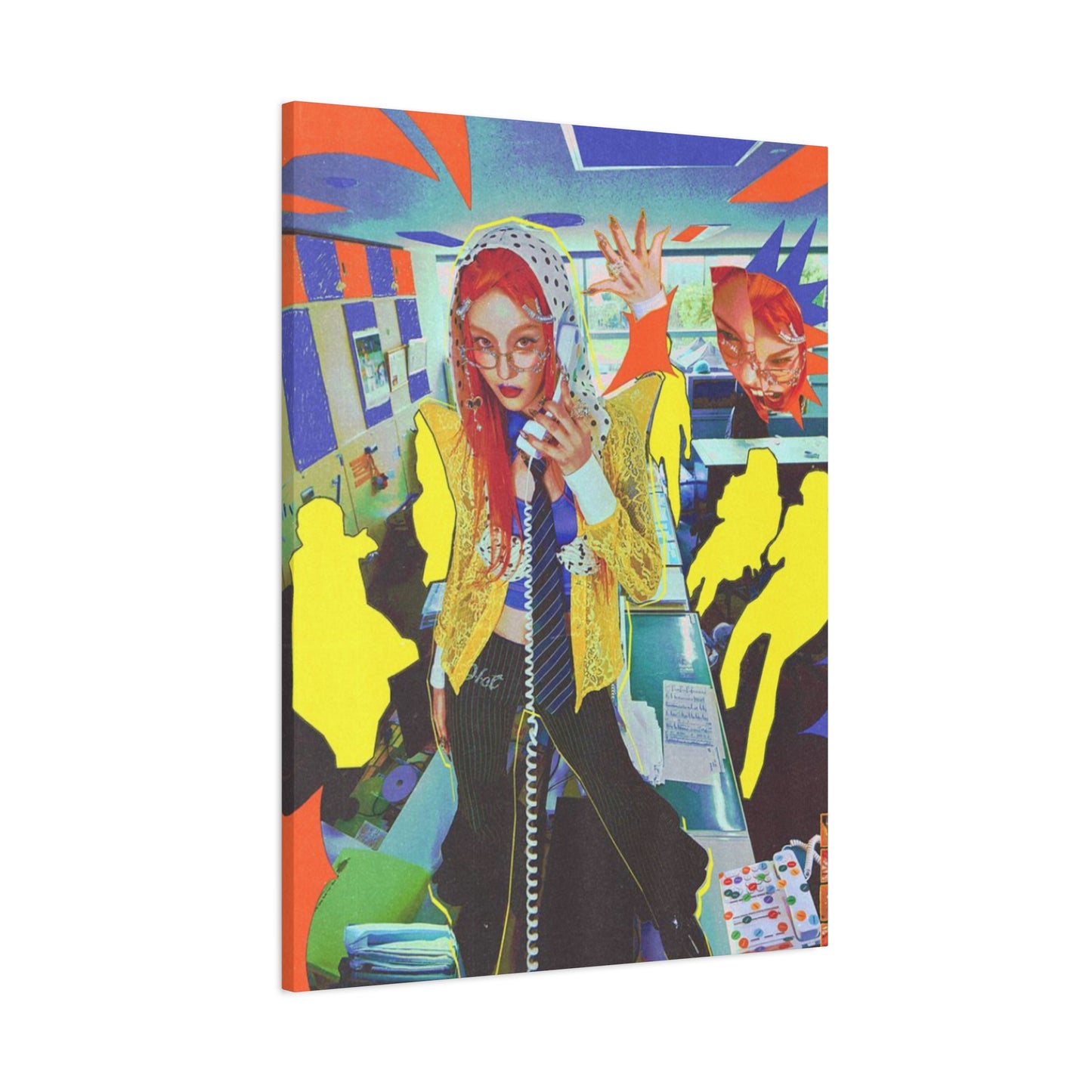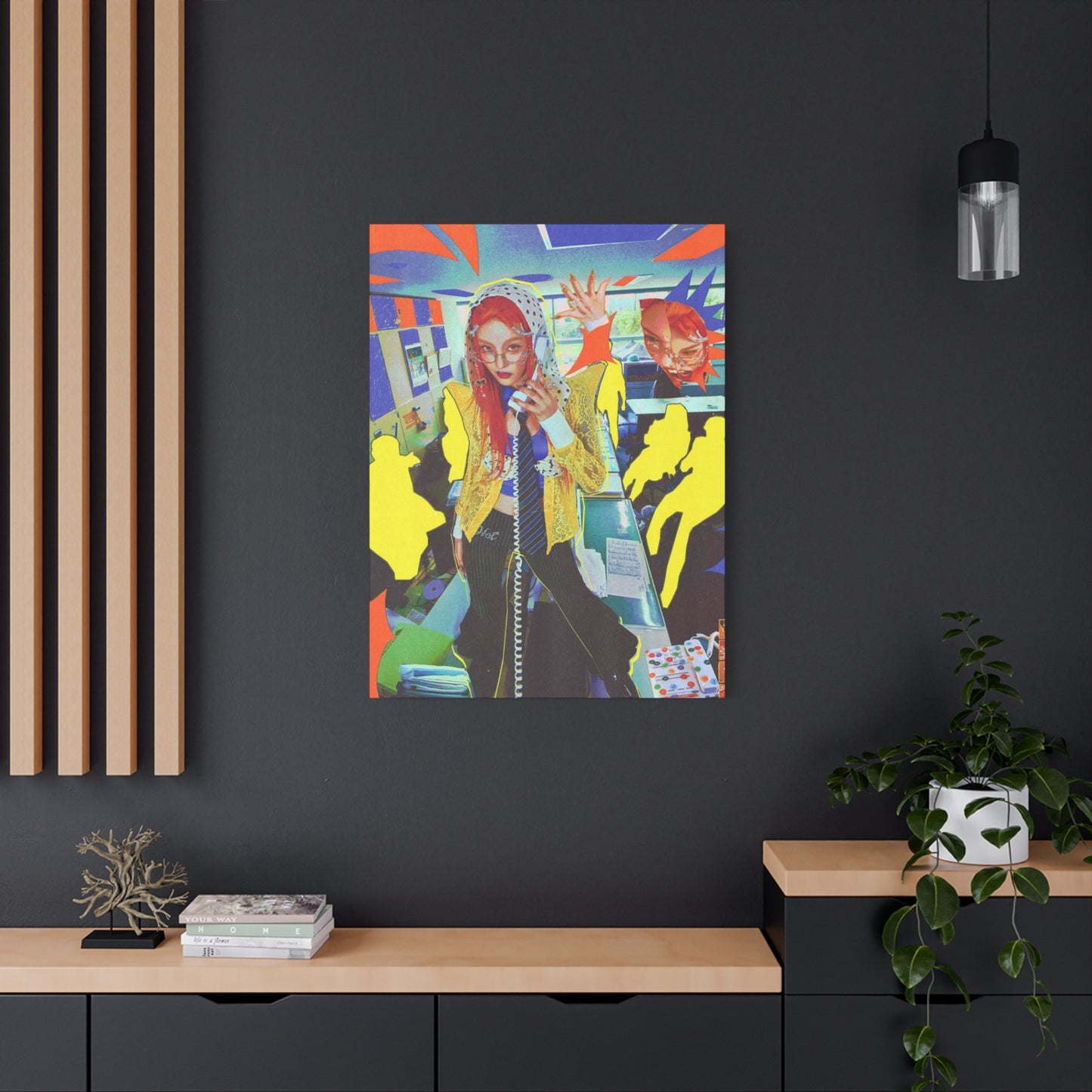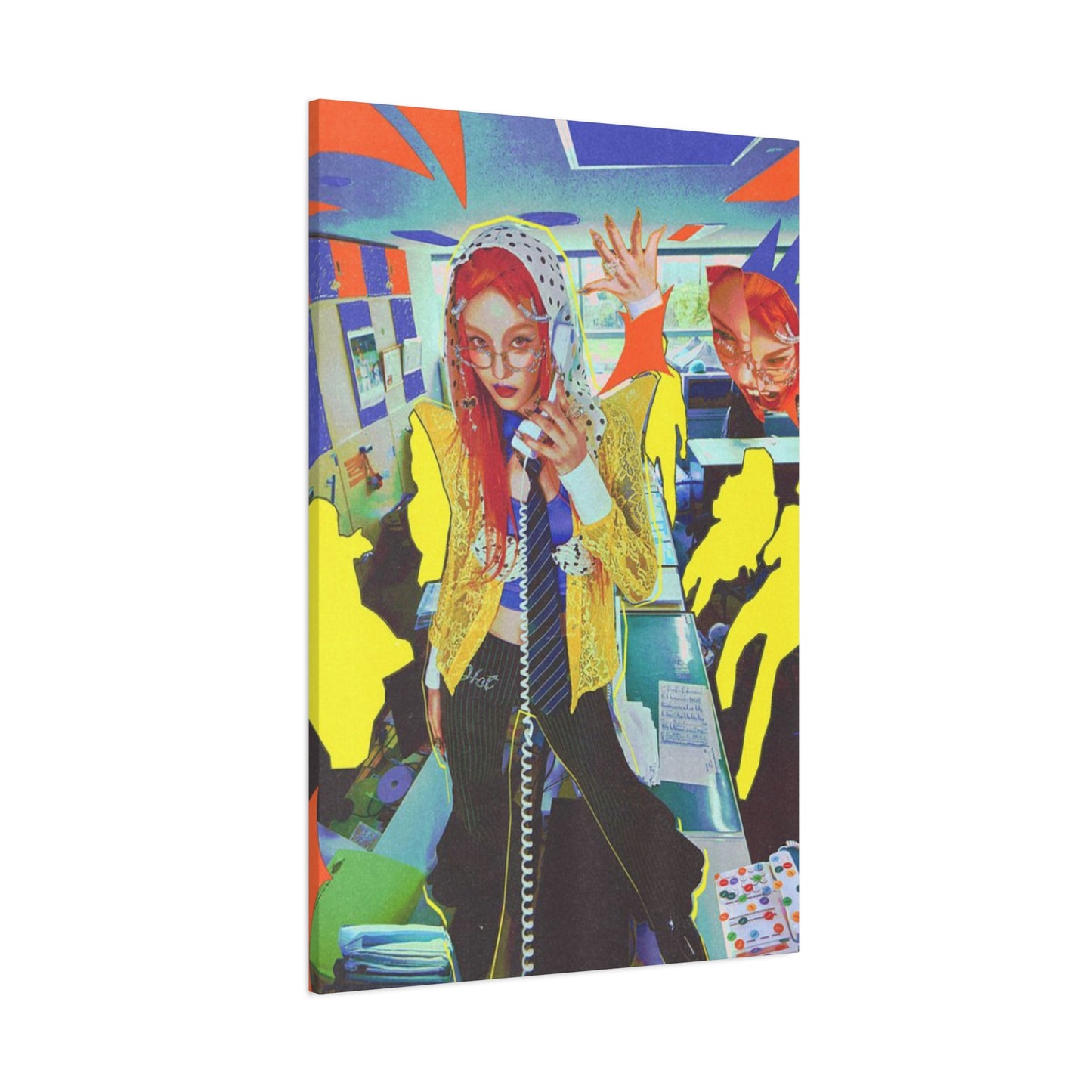Celebrating Voice and Vision: Singing Women mixed media Wall Art That Speaks to the Soul
The artistic representation of vocalists has long captivated audiences, offering a visual symphony that resonates beyond the canvas. When feminine figures are captured mid-song, the resulting imagery carries an emotional weight that transforms any environment. These pieces serve as more than decorative elements; they become powerful statements of passion, creativity, and the universal language of music frozen in time.
Contemporary artists have embraced various approaches to depicting these dynamic subjects, from traditional realism to bold experimental techniques. Each method brings its own character and energy, allowing collectors and enthusiasts to find pieces that align with their personal aesthetic preferences. The beauty lies not just in the subject matter itself, but in how different artistic philosophies interpret the act of vocal expression.
Whether rendered through layered materials, abstract compositions, or vivid chromatic choices, these works offer endless possibilities for enhancing living environments. They invite viewers to pause, reflect, and connect with the universal experience of music and emotion. The following exploration delves into the multifaceted world of these captivating pieces, examining techniques, emotional resonance, display considerations, and the symbolic significance they carry.
Expressive Power of Singing Women Art
The depiction of vocalists in artistic form carries an inherent dynamism that few other subjects can match. When an artist captures someone in the midst of vocal performance, they freeze a moment of pure emotional release. The open mouth, the tilted head, the closed eyes, the tension in the shoulders—all these physical manifestations of song-making translate into visual energy that radiates from the canvas.
This expressive power stems from the universal connection humans share with music. Regardless of cultural background or personal experience, viewers instinctively understand the vulnerability and strength required to lift one's voice. The artwork becomes a bridge between the silent visual medium and the imagined sound, allowing observers to almost hear the melody pouring forth from the depicted figure.
Artists working in this genre often emphasize the emotional intensity through their choice of composition and technique. Some focus on the facial features, magnifying the expression to capture every nuance of feeling. Others take a broader view, incorporating body language and posture to convey the full physical commitment of performance. The most successful pieces manage to communicate not just that someone is singing, but the emotional quality of that song—whether it's joyful, melancholic, passionate, or triumphant.
The feminine figure as vocalist carries additional layers of meaning. Throughout history, women's voices have been both celebrated and suppressed, making these representations particularly resonant in contemporary contexts. They speak to empowerment, to claiming one's voice, to the courage required to be heard. This symbolic dimension adds depth beyond the immediate aesthetic appeal.
Color choices significantly contribute to the expressive impact. Warm tones can suggest intimacy and emotional warmth, while cooler palettes might evoke introspection or solemnity. High contrast creates drama, while subtle gradations offer a more contemplative mood. The interplay between hue, saturation, and value works in concert with the figurative elements to amplify the emotional message.
Texture also plays a crucial role in building expressive power. Rough, impasto applications can convey raw emotion and unfiltered expression, while smooth, blended techniques might suggest polished performance or emotional restraint. The physical surface of the work becomes another channel through which the artist communicates feeling.
Beyond the technical execution, these pieces resonate because they capture a fundamentally human act. Singing represents one of our most primal forms of expression, requiring no tools or instruments beyond our own bodies. When we observe someone else engaged in this act, we're witnessing pure human creativity and communication, stripped of pretense.
Abstract Styles in Singing Women Canvas Prints
Abstract interpretation offers unique opportunities for depicting vocalists, freeing artists from the constraints of literal representation while maintaining the essential energy of the subject. In this approach, recognizable elements dissolve into shapes, forms, and color relationships that suggest rather than define. The viewer's imagination becomes an active participant, filling in details and projecting their own experiences onto the visual information provided.
Geometric abstraction might reduce the singing figure to angular planes and intersecting lines. A profile could become a series of triangular forms, the open mouth a stark oval against contrasting shapes. This reduction to essential elements paradoxically creates space for emotional amplification, as the viewer isn't distracted by realistic details but instead focuses on the structural dynamics that convey movement and energy.
Fluid abstraction takes an entirely different approach, using organic curves, flowing lines, and biomorphic shapes to evoke the sensation of vocal sound waves and emotional currents. Colors might blend and bleed into one another, creating atmospheric effects that mirror the ephemeral nature of music itself. The boundaries between figure and background dissolve, suggesting the way sound fills and transforms environments.
Expressionistic abstraction leans into bold, gestural mark-making and intense color applications. Brushstrokes become visible and assertive, carrying their own emotional charge. The singing figure emerges from chaotic or energetic backgrounds, as if the act of vocalization creates form from formlessness. This style particularly excels at conveying the physical exertion and emotional release inherent in powerful singing.
Color field approaches might use large areas of saturated hue with minimal figurative elements. A silhouette suggestion against vibrant color planes can be remarkably evocative, allowing the colors themselves to carry the emotional weight traditionally assigned to detailed rendering. This minimalist approach requires careful consideration of color relationships and compositional balance.
Cubist-influenced works fragment and reconstruct the singing figure, presenting multiple viewpoints simultaneously. This technique captures the multidimensional nature of musical performance—the public face, the private emotion, the physical mechanics, the spiritual transcendence—all coexisting in fractured harmony. The resulting images challenge viewers to piece together meaning from disparate visual information.
Abstract approaches also allow for greater interpretive freedom regarding identity. When features are suggested rather than detailed, viewers can project more readily, seeing themselves or their experiences reflected in the work. This universality makes abstract vocal representations particularly powerful as they speak to shared human experiences rather than specific individuals.
The relationship between abstraction and music is particularly natural, as both exist in realms beyond literal language. Just as music communicates through organized sound patterns that bypass verbal reasoning, abstract visual art speaks through form, color, and composition. Combining these two art forms creates a rich dialogue between visual and auditory sensibilities.
Mixed Media Techniques in Singing Women Art
Contemporary artists increasingly embrace mixed media approaches, combining various materials and methods to create richly layered works that offer visual complexity and tactile interest. These techniques allow for greater expressive range and can add symbolic dimensions as different materials carry their own associations and meanings.
Collage elements frequently appear in these works, with paper, fabric, or found materials incorporated into the composition. Sheet music fragments might be layered beneath or around the singing figure, creating a direct visual link between the subject and musical notation. Vintage papers can add historical depth, while contemporary materials bring modern energy. The juxtaposition of materials creates conversation between different textures and visual languages.
Acrylic paints combine beautifully with other media due to their versatility and quick drying time. Artists often use acrylics as both foundational layers and finishing touches, building up color and form while leaving room for incorporating additional materials. The fast-drying nature allows for rapid layering, essential when working with multiple media that might otherwise interact unpredictably.
Oil paints bring richness and depth that other media struggle to match. Their slow drying time allows for extended blending and manipulation, perfect for creating luminous skin tones or atmospheric backgrounds. When combined with faster-drying media, oils can provide a final layer of refinement and depth.
Ink adds linear precision and dramatic contrast. Whether applied with brush, pen, or unconventional tools, ink creates sharp edges and bold lines that can define features, add calligraphic elements, or introduce pattern and decoration. Alcohol inks offer vibrant, unpredictable effects as they flow and bloom across surfaces.
Pastels contribute soft, velvety texture and intense color saturation. Oil pastels can be blended and layered for painterly effects, while soft pastels offer delicate transitions and subtle color gradations. Their powdery quality creates visual interest distinct from liquid media.
Metallic elements bring luminosity and contemporary flair. Gold leaf or metallic paints can highlight specific areas, catching light and drawing the eye. These additions can symbolize value, divinity, or simply add visual excitement. Copper, silver, and bronze tones each bring different energetic qualities to a composition.
Textural additives create physical dimension. Sand, fiber, modeling paste, or gel mediums build up surfaces that cast shadows and catch light differently than flat applications. These three-dimensional elements make the work more sculptural, engaging viewers through both visual and implied tactile experiences.
Stenciling and stamping introduce pattern and repetition. These techniques can create backgrounds, add decorative elements, or build up layers of visual information. The mechanical quality of printed or stenciled elements contrasts interestingly with more organic, hand-painted areas.
Digital elements increasingly appear in mixed media works. Printed photographs, digital paintings, or manipulated images can be incorporated, then painted over or combined with traditional materials. This fusion of contemporary and classical techniques reflects our multimedia present.
The layering inherent in mixed media approaches mirrors the complexity of human emotion and experience. Just as a singing voice layers breath, vibration, resonance, and articulation to create sound, mixed media artworks layer materials and techniques to create visual richness. The viewer's eye moves through these layers, discovering new details with each viewing.
How Singing Women Art Inspires Emotion
The emotional impact of vocal performance captured in visual form operates through multiple channels simultaneously, creating a powerful viewing experience that resonates on both conscious and unconscious levels. This multi-layered emotional engagement distinguishes these works from more neutral subject matter.
Empathetic response forms the foundation of emotional connection. When viewing someone in the midst of vocal expression, mirror neurons activate in the observer's brain, creating a physical echo of the depicted experience. We feel the breath, the tension, the release. This neurological mirroring translates abstract visual information into felt experience, allowing artwork to generate genuine emotional responses.
Musical associations enhance emotional resonance. Most viewers carry extensive libraries of musical memories and associations. An image of someone singing activates these stored experiences, and the viewer unconsciously projects their musical memories onto the visual information. The depicted figure becomes a vessel for personal associations with specific songs, performances, or emotional moments connected to music.
The vulnerability of performance connects deeply with viewers. Singing requires opening oneself both literally and figuratively. The physical opening of the mouth and throat mirrors emotional openness and risk. Depicting this moment of exposure creates intimacy between artwork and viewer, inviting emotional investment and connection.
Compositional strategies amplify emotional impact. Dynamic diagonals create tension and energy, while stable horizontal and vertical elements suggest calm or strength. The positioning of the figure within the picture plane affects emotional interpretation—a figure pressed toward the edge might suggest urgency or constraint, while a centrally positioned subject conveys confidence and presence.
Color psychology plays a significant role in emotional communication. Red suggests passion, intensity, and energy. Blue evokes calm, sadness, or introspection. Yellow brings optimism and vitality. Artists consciously manipulate color to guide emotional interpretation, though individual responses vary based on cultural background and personal association.
Scale influences emotional experience. Larger works create immersive environments that can overwhelm the viewer's visual field, generating powerful emotional responses. Smaller pieces invite more intimate engagement, drawing viewers close for personal contemplation. The relationship between artwork size and viewer creates different emotional dynamics.
Lighting within the composition directs emotional interpretation. Dramatic chiaroscuro suggests intensity and internal conflict. Even, ambient light creates calm and openness. Backlighting can generate ethereal or spiritual qualities. The way light falls on the figure and the resulting shadows communicate time, mood, and emotional atmosphere.
Brushwork and mark-making carry emotional content. Aggressive, energetic application suggests passion and intensity. Delicate, controlled marks communicate restraint or precision. The visible hand of the artist becomes part of the emotional narrative, showing the physical engagement of art-making as parallel to the physical engagement of singing.
The juxtaposition of control and spontaneity within a single work creates emotional complexity. Tightly rendered details alongside loose, expressive passages mirror the duality of musical performance—the discipline and technique combined with spontaneous expression and emotional authenticity. This visual complexity invites viewers to engage more deeply, discovering new emotional dimensions with repeated viewing.
Using Singing Women Prints to Energize Walls
Incorporating vocal performance imagery into living environments creates immediate visual impact while contributing to the overall atmosphere and energy of a room. Strategic placement and thoughtful integration ensure these powerful pieces enhance rather than overwhelm their surroundings.
Focal point creation represents one primary application. A striking print positioned above a sofa, fireplace, or bed naturally draws the eye and anchors the room's design. The dynamic energy of the singing figure activates the wall, preventing dead zones and creating visual interest that holds attention. This approach works particularly well in areas where you want to encourage conversation or contemplation.
Hallways and corridors benefit enormously from this energizing artwork. These transitional passages often feel neglected in design schemes, becoming merely functional paths between rooms. A series of vocal performance prints transforms the hallway into a gallery experience, making the journey through the home itself a pleasure. The sequential viewing as you walk past creates a sense of movement and progression.
Home offices and creative workspaces gain inspiration from these images. The depiction of someone engaged in passionate creative expression serves as a visual reminder of the importance of authentic self-expression. During challenging work moments, glancing at the artwork can reconnect you with your own creative potential and remind you why you pursue your work.
Dining areas become more vibrant when energized with vocal performance imagery. The communal nature of dining parallels the communicative nature of singing, and the artwork contributes to a convivial atmosphere. Whether formal or casual, the dining experience benefits from artwork that celebrates expression and connection.
Bedroom applications require careful consideration of emotional tone. While some might find the energy of vocal performance stimulating in positive ways, others might prefer more serene imagery for sleeping areas. When used in bedrooms, consider pieces with softer color palettes or more contemplative expressions that maintain the subject's power while offering calm.
Entryways make powerful statements with these prints. The first impression upon entering a home sets expectations for the entire visit. A bold vocal performance image immediately communicates creativity, passion, and individuality. It welcomes guests into a home where expression and artistry are valued.
Bathroom applications might seem unconventional, but these private sanctuaries offer opportunities for personal expression. A small print in this intimate setting can transform daily routines into moments of beauty and reflection. The moisture-resistant nature of certain printing methods makes this application practical as well as aesthetically interesting.
Multi-panel installations create expanded visual narratives. A triptych or diptych of vocal performance images creates rhythm and movement across the wall. The spaces between panels introduce visual breathing room while maintaining connection through repeated themes or color relationships. This approach suits larger walls that might be overwhelmed by a single massive piece.
Gallery wall integration allows vocal performance prints to dialogue with other artwork. Mixing different sizes, styles, and subjects creates visual richness and personality. The singing figure pieces bring energy that can enliven more subdued works, while other pieces provide context and variety that prevent visual monotony.
Layering and propping creates casual, collected aesthetics. Rather than hanging everything, lean larger pieces against walls on mantels, shelves, or floors. This approach allows easy rotation and rearrangement, keeping the environment dynamic. The informality can make spaces feel more approachable and lived-in while maintaining visual sophistication.
Lighting considerations maximize impact. Picture lights draw attention and add drama, while ambient lighting affects how colors appear and interact with surroundings. Natural daylight changes throughout the day, causing artwork to appear different at various times. Consider how the piece will look in different lighting conditions when choosing placement.
Mixed Media Canvas Prints
Proper maintenance ensures these artistic investments remain vibrant and intact for years or generations. Different materials and techniques require specific care approaches, and understanding these needs protects both aesthetic qualities and financial value.
Dust accumulation represents the most common threat to artwork. Regular gentle cleaning prevents buildup that can embed in textured surfaces or dull colors. Use soft, clean microfiber cloths or brushes specifically designed for artwork. Work from top to bottom in gentle strokes, never applying pressure that might damage delicate surfaces. Avoid feather dusters, as the quills can catch on textured elements.
Environmental control significantly impacts longevity. Excessive humidity promotes mold growth, particularly dangerous with organic materials like paper or natural fibers in mixed media works. Ideal humidity ranges between forty and fifty percent. Too-dry conditions can cause materials to become brittle and crack. Consider using humidifiers or dehumidifiers to maintain stable conditions.
Temperature stability prevents expansion and contraction cycles that stress materials. Avoid hanging artwork above heating vents, radiators, or fireplaces where temperature fluctuates dramatically. Consistent temperatures between sixty-five and seventy-five degrees Fahrenheit provide ideal conditions. Extreme cold can also damage artwork, so unheated storage areas pose risks.
Light exposure causes fading and deterioration. Ultraviolet rays prove particularly harmful, bleaching colors and breaking down materials at molecular levels. Use UV-filtering glass or acrylic glazing when framing. Position artwork away from direct sunlight, and consider UV-filtering window films in bright rooms. Even artificial light contributes to cumulative damage, so avoid spotlighting artwork unnecessarily.
Handling requires care and consciousness. Always grasp artwork by its frame or edges, never touching the surface. Oils from skin can transfer and cause damage over time. When moving pieces, plan the route beforehand to avoid bumping or scraping. Use both hands, and never carry anything you cannot comfortably manage alone.
Cleaning methods vary by material. For acrylic paintings, slightly damp soft cloths can remove surface dirt, working gently and never saturating the surface. Oil paintings require different approaches—never use water, as it can penetrate cracks and cause delamination. For works incorporating paper or delicate materials, cleaning becomes more complex and might require professional conservation.
Protective finishes serve multiple functions. Varnishes provide physical barriers against dust and minor abrasions while unifying surface appearance and enhancing colors. However, application requires knowledge and skill, as improper varnishing can cause irreversible damage. Some mixed media elements don't accept varnish well, making selective application necessary.
Storage considerations matter when rotating displays or preserving pieces. Wrap artwork in acid-free paper or glassine, never plastic wrap or bubble wrap that can trap moisture or transfer chemicals. Store flat when possible, or upright with proper support. Never store artwork directly on concrete floors or against exterior walls where moisture and temperature fluctuations are greatest.
Pest prevention protects against insects that might damage organic materials. Regular inspection catches problems early. Moths, silverfish, and carpet beetles can cause significant damage to works incorporating fabric or paper. Keeping storage areas clean and using acid-free materials helps prevent infestations.
Documentation and inventory maintain value and facilitate insurance claims if needed. Photograph all artwork from multiple angles, including detail shots of signatures and unique features. Record dimensions, materials, purchase information, and any provenance details. Update documentation if restoration or conservation work occurs.
Professional conservation becomes necessary when damage occurs or preventive measures fail. Don't attempt repairs with household materials or methods. Qualified conservators have specialized training and materials to address damage while preserving original materials and artistic intent. The cost of conservation represents insurance against losing irreplaceable artwork.
Insurance protection provides financial security. Some homeowner's or renter's policies include artwork coverage, but limits might be inadequate for valuable collections. Consider separate fine art insurance policies that cover damage, loss, and theft. Proper documentation supports insurance claims and establishes value.
Framing Ideas for Singing Women Artwork
The frame serves as the artwork's ambassador to its environment, creating transition between piece and surroundings while protecting and presenting the work to its best advantage. Thoughtful framing elevates artwork and integrates it successfully into diverse settings.
Traditional wood frames offer timeless elegance and warmth. Dark woods like walnut or mahogany provide gravitas and formality, suitable for classical or serious imagery. Lighter woods such as maple or oak bring organic warmth without visual heaviness. Wood grain patterns add subtle texture that can complement or contrast with the artwork's surface qualities.
Ornate gilded frames create Old Master sophistication. Gold leafed frames in baroque or rococo styles surround artwork with luxury and historical reference. This approach works particularly well when contrasting traditional framing with contemporary artwork, creating interesting dialogues between old and new. Silver or pewter tones offer similar grandeur with cooler temperature.
Simple black frames provide classic versatility. Black creates clean, definitive boundaries while remaining neutral enough to work with most color schemes. Matte black offers contemporary minimalism, while glossy black brings more traditional formality. The simplicity keeps focus on the artwork while providing necessary structure.
White or cream frames lighten and brighten. These choices work beautifully in contemporary, coastal, or Scandinavian-influenced settings. The pale frame expands rather than contains the artwork, creating airiness. This approach particularly benefits pieces with lighter palettes or when you want to prevent visual heaviness.
Metal frames bring industrial edge and contemporary flair. Aluminum, steel, or brass frames offer sleek lines and modern sensibility. The reflective quality of metal adds subtle light play that can enhance viewing experience. Thin metal profiles minimize visual presence, allowing the artwork maximum prominence.
Floated mounting creates sophisticated presentation. Rather than sitting directly in the frame, the artwork appears suspended within it, with space visible between canvas edges and frame. This treatment emphasizes the artwork's three-dimensional object quality and works beautifully with mixed media pieces where edges and sides carry visual interest.
Shadow box depth accommodates three-dimensional mixed media elements. When artwork extends beyond flat surfaces, standard frame depth proves insufficient. Shadow boxes provide necessary clearance while protecting dimensional elements. The added depth creates sculptural presence on the wall.
Matting considerations affect presentation significantly. Mats create breathing room between artwork and frame, preventing visual crowding. White or cream mats offer classic elegance, while colored mats can pick up accent colors from the artwork. Multiple mat layers add sophistication and can introduce subtle color variations.
Frameless presentations create modern minimalism. Mounting artwork directly to backing boards without surrounding frames creates clean, gallery aesthetics. This approach suits contemporary settings and allows artwork to interact more directly with wall colors. Edge protection becomes important without frame coverage.
Custom frame proportions respond to specific artwork needs. Standard frame proportions work well for most pieces, but unusual sizes or shapes benefit from custom solutions. The frame width should balance with artwork scale—delicate pieces disappear in heavy frames, while substantial works need adequate frame presence.
Glass versus acrylic glazing involves tradeoffs. Glass offers superior optical clarity and scratch resistance but weighs significantly more and poses breakage risks. Acrylic weighs less and resists shattering but scratches more easily. UV-filtering varieties of both protect against light damage. Non-reflective or museum glass minimizes glare but costs considerably more.
Corner detailing adds character. Mitered corners provide clean, seamless appearance, while decorative corner elements introduce ornamental interest. The corner treatment contributes to overall frame style and should align with the design direction you're pursuing.
Color coordination requires careful consideration. Frames can harmonize with dominant artwork colors or introduce complementary contrasts. Neutrals generally prove safest, but adventurous color choices can create exciting presentations. Consider how frame color interacts with both artwork and room colors.
Frame style sets contextual relationships. Contemporary artwork in antique frames creates interesting tension, while traditional art in modern frames updates and refreshes. Matching style to style creates harmony, while mismatching generates energy through contrast.
Bold Colors in Singing Women Abstract Art
Chromatic intensity creates immediate visual impact and emotional resonance. Bold color applications transform vocal performance imagery into vibrant celebrations of life, energy, and passion. The relationship between hue, saturation, and value determines the ultimate emotional and aesthetic effect.
Pure, saturated hues generate maximum vibrancy and energy. Unmuted reds, blues, yellows, and greens create bold statements that demand attention. These intense applications suit abstract interpretations where representational accuracy becomes secondary to emotional impact. The colors themselves become the primary communication vehicle, with the singing figure serving as structure for chromatic exploration.
Complementary contrasts create visual electricity. Positioning opposite colors from the color wheel in close proximity generates optical vibration and excitement. Red against green, blue against orange, yellow against purple—these pairings maximize visual impact and create dynamic tension. The eye moves actively between complementary colors, unable to settle, maintaining viewer engagement.
Analogous harmonies offer bold sophistication. Using colors adjacent on the color wheel creates cohesive, flowing color experiences. A palette of red, red-orange, and orange creates warm, energetic unity. Blue, blue-green, and green produce cooler, more contemplative cohesion. The subtlety of variation within overall harmony creates visual interest without aggressive contrast.
Triadic relationships provide balanced complexity. Selecting three colors equally spaced on the color wheel generates balanced yet vibrant palettes. Red, yellow, and blue offer primary boldness. Orange, green, and purple create secondary sophistication. These balanced relationships feel complete and intentional while maintaining chromatic excitement.
Temperature contrasts create depth and atmosphere. Warm colors advance visually while cool colors recede, allowing artists to create spatial effects through color alone. A cool blue background with warm orange figure creates immediate dimensionality. The temperature differential guides eye movement and establishes focal hierarchy.
Value contrast amplifies bold color impact. High contrast between light and dark creates drama and visual punch. A vibrant yellow figure against deep purple background generates maximum visibility and impact. Lower contrast creates subtlety and sophistication, allowing colors to interact more gently.
Color gradations add complexity to bold palettes. Rather than flat color applications, gradual transitions between related hues create visual richness. A figure might shift from deep magenta to bright fuchsia to pale pink, creating dimensional form through color modulation alone. These gradations prevent bold colors from becoming monotonous.
Accent colors provide punctuation and surprise. A predominantly cool palette might include strategic warm accents that draw attention and create focal points. These small color surprises guide viewer attention and prevent predictability. The unexpected color moment delights the eye and maintains interest.
Color symbolism adds meaning layers. Red traditionally represents passion, energy, and intensity—perfect for vocal performance imagery. Blue suggests emotion, depth, and spirituality. Yellow brings joy and optimism. Green represents growth and renewal. Artists manipulate these associations to enhance thematic content.
Cultural color associations vary significantly across regions and populations. Western associations don't necessarily translate globally, and artists working for diverse audiences consider these differences. Red means luck and celebration in many Asian cultures, while representing danger or warning in Western contexts. Understanding your audience's cultural framework informs color choices.
Personal color response varies with individual psychology and experience. Some viewers energize from bold color, while others find it overwhelming. Creating work that resonates requires understanding likely audience responses while maintaining artistic integrity and vision. The most successful artists follow their intuition while remaining aware of viewer reactions.
Proportion and distribution affect bold color impact. Small amounts of intense color create accent moments, while large color fields generate immersive experiences. The distribution pattern—whether concentrated or distributed—changes how viewers experience the color. Strategic placement guides attention and creates visual pathways through the composition.
Singing Women Art for Creative Corners
Dedicated creative areas within homes benefit enormously from inspiring artwork that celebrates artistic expression. These specialized zones require thoughtful artistic selections that motivate, energize, and support the creative work occurring within them.
Studio environments thrive on visual inspiration. Artists working in painting, writing, crafts, or other creative pursuits benefit from surrounding themselves with work that reminds them of why they create. Vocal performance imagery speaks to the courage required for authentic expression, serving as visual encouragement during challenging creative moments. The depicted figure becomes a companion in the creative journey.
Reading nooks gain atmosphere from carefully chosen artwork. These intimate retreats dedicated to literature and contemplation benefit from pieces that suggest introspection and emotional depth. A more subdued rendering of a vocalist might complement the quiet concentration of reading, while bolder pieces energize the environment and prevent sleepiness during long reading sessions.
Craft corners require visual interest without overwhelming the work surface. Smaller prints or pieces positioned above work areas maintain inspiration without interfering with the physical activities of crafting. The artwork shouldn't compete with the materials and projects in progress but should enhance the overall creative atmosphere of the dedicated area.
Music rooms naturally align with vocal performance imagery. Whether housing instruments, audio equipment, or serving as practice areas, these locations benefit from visual celebration of musical expression. The artwork reinforces the room's purpose and creates aesthetic unity between visual and auditory art forms.
Writing desks become more inspiring when energized with expressive artwork. Writers often struggle with the vulnerability of exposing their inner thoughts through words. Visual reminders of others engaged in similar acts of creative courage provide psychological support. The singing figure serves as metaphor for the writer's own voice finding expression.
Home recording studios balance technical equipment with creative atmosphere. These spaces can feel cold and utilitarian without thoughtful aesthetic consideration. Artwork humanizes the environment and reminds creators that technical proficiency serves emotional and artistic truth. Strategic placement ensures equipment functionality isn't compromised while visual interest is maintained.
Meditation or yoga areas might initially seem unsuited to dynamic vocal imagery, but contemplative renderings of singers can enhance these practice environments. The connection between breath, voice, and body awareness parallels breath-focused meditation and yoga practices. Selecting pieces with calm color palettes and reflective rather than explosive energy creates alignment with contemplative practices.
Children's creative corners inspire young artists and musicians. Age-appropriate vocal performance imagery introduces children to artistic possibilities and normalizes creative expression. Selecting pieces with playful energy and accessible imagery encourages children to explore their own creative voices without intimidation.
Dressing areas and closets benefit from empowering imagery. The daily ritual of preparing one's appearance for the world parallels the preparation performers undergo before stepping into public view. Artwork in these personal preparation areas can set positive, confident tones for the day ahead.
Library or home office bookshelves create opportunities for smaller artwork displays. Interspersing vocal performance prints among books creates visual rhythm and breaks up monotonous book spines. The artwork dialogues with literary content, creating relationships between visual and written expression.
Stairway landings transform into mini-galleries with strategic artwork placement. These pausing points during vertical circulation through the home offer perfect opportunities for featuring meaningful pieces. The eye naturally seeks visual interest during the brief pause, making these locations ideal for artwork requiring more contemplation.
Window seats and bay window areas gain personality from adjacent artwork. These naturally lit alcoves often serve as informal creative or contemplative zones. Positioning artwork to catch natural light creates changing viewing experiences throughout the day as light quality shifts.
Combining Mixed Media with Abstract Designs
The fusion of multiple material approaches with non-representational composition creates artwork of remarkable complexity and visual interest. This combination allows maximum creative freedom while offering rich sensory experiences that engage viewers on multiple levels simultaneously.
Material diversity creates textural conversations within single compositions. Smooth acrylic passages contrast with rough collage elements. Metallic areas catch light differently than matte sections. Transparent glazes reveal underlying layers while opaque applications conceal and create mystery. These textural variations give the eye multiple experiences within the unified composition.
Abstract structure provides framework for material experimentation. Without the constraints of representational accuracy, artists freely explore how different materials interact, overlap, and complement each other. A gesture suggesting a singing figure might incorporate fabric for implied clothing, metallic elements for jewelry suggestions, and heavy impasto for hair texture. The abstraction liberates these material choices from literal interpretation.
Layering depth emerges naturally from mixed media abstraction. Beginning with collaged foundations, artists build through painting, drawing, and additional material applications. Each layer partially obscures and partially reveals previous layers, creating historical depth within the artwork. This archaeological quality invites viewers to visually excavate the composition, discovering hidden elements.
Color interactions shift when different media combine. Transparent watercolor over textured acrylic behaves differently than opaque gouache over smooth gesso. Oil paint over acrylic creates certain effects impossible in reverse order. Understanding material properties allows artists to achieve specific visual results while embracing happy accidents that emerge from material interactions.
Dimensional elements introduce sculptural qualities. Objects embedded in or applied to surfaces extend the artwork into three-dimensional territory. Wire, found objects, fabric, or paper elements casting actual shadows create changing appearances as lighting conditions shift throughout the day. The artwork becomes more object than pure image.
Mark-making diversity creates visual rhythm and movement. Combining precise linear elements with gestural brushwork, stippled areas with smooth gradations, creates visual music. The varied marks guide eye movement through the composition while preventing monotony. Each mark-making technique contributes its unique voice to the overall visual symphony.
Transparency and opacity relationships add complexity. Transparent passages allow visual depth as viewers see through to underlying layers. Opaque areas provide visual rest and concealment. The interplay between revelation and concealment creates mystery and encourages extended viewing as viewers attempt to decipher the layered information.
Pattern and texture combinations prevent visual stagnation. Repeated elements might emerge from stamping, stenciling, or collaged materials. These patterned areas contrast with more organic, spontaneous passages, creating visual dialogue between control and spontaneity. The contrast mirrors the duality of vocal performance—technical precision combined with emotional spontaneity.
Edge quality variations contribute to abstract effectiveness. Hard edges create definitive boundaries and visual snap, while soft edges generate atmospheric transitions and gentle movement. Mixing edge qualities throughout a composition creates visual variety and guides attention. Sharp edges naturally draw focus, while soft edges allow the eye to move fluidly.
Material symbolism adds meaning layers. Incorporating music manuscript adds direct thematic connection. Vintage materials suggest historical continuity. Contemporary materials ground the work in present moment. The specific material choices carry meaning beyond their visual properties, enriching thematic depth.
Color unity challenges grow with material diversity. Different materials accept and display color differently. Maintaining color harmony when working with fabric, paper, paint, and metal requires careful consideration. Some artists embrace these color variations, allowing each material to display color in its characteristic way. Others work to unify color across different materials for greater cohesion.
Balance between chaos and control determines ultimate success. Too much control creates stiffness and predictability. Too much chaos generates confusion and visual noise. The most successful mixed media abstractions find sweet spots where energy and spontaneity balance with structure and intentionality.
Singing Women as Symbols of Strength
The visual representation of vocalists carries powerful symbolic weight, particularly when depicting feminine subjects. These images resonate as embodiments of empowerment, courage, authenticity, and the claiming of voice in both literal and metaphorical senses.
Voice as power manifests in multiple dimensions. The physical act of producing sound requires breath control, muscular coordination, and mental focus. Raising one's voice above silence represents courage and self-assertion. Throughout history, silencing has served as a control mechanism, making vocalization inherently political. Artwork celebrating singing figures implicitly celebrates resistance to silencing.
Vulnerability and strength coexist in vocal performance. Opening one's throat and body to produce sound requires making oneself physically vulnerable. The possibility of critique, rejection, or failure accompanies every vocal act. Yet choosing to sing despite these risks demonstrates remarkable courage. This paradox of vulnerable strength makes vocal imagery particularly powerful.
Feminine empowerment themes resonate strongly in contemporary contexts. Historical restrictions on women's public voices make current celebration of feminine vocalization especially meaningful. These images reject limitations and celebrate female agency, creativity, and expression. They stand as visual affirmations that women's voices matter and deserve to be heard.
Authenticity emerges as central theme. Singing, particularly emotive singing, requires accessing genuine feeling and expressing it without pretense. The singer cannot fake true emotional connection—audiences detect inauthenticity immediately. Visual representations of this authentic expression become symbols of living truthfully and expressing genuine selfhood.
Creative courage inspires viewers to embrace their own expression. Observing someone else engaged in brave creative acts provides modeling and permission. If the depicted figure can open herself to the risks of authentic expression, perhaps the viewer can find similar courage in their own creative pursuits. The artwork becomes catalyst for viewer action.
Communication and connection drive vocal expression. Singing reaches toward listeners, seeking to share emotion, story, or experience. This fundamental human desire to connect and be understood resonates universally. Images of singers become symbols of all attempts to bridge isolation through communication.
Conclusion
In conclusion, singing women mixed media wall art offers a profound celebration of voice, vision, and the soulful power of expression. These artworks capture more than just musical performance—they embody the emotions, stories, and cultural significance that come with song, especially when portrayed through the rich, layered textures of mixed media. For art lovers and music enthusiasts alike, this genre provides a deeply moving connection to the spirit of creativity, resilience, and feminine strength.
What makes singing women mixed media art uniquely compelling is its multidimensional approach. By blending paint, collage, fabric, and other materials, artists create vibrant compositions that transcend traditional two-dimensional art. The tactile layers mirror the complexity of the human voice—its depth, texture, and resonance—while visual elements amplify the emotional impact. This synergy invites viewers not just to see but to feel the energy and passion of the performers, making the artwork truly immersive.
The subject of singing women is powerful in itself. Historically and culturally, women’s voices have been both a tool for storytelling and a symbol of empowerment. Mixed media pieces that highlight these figures celebrate diversity in voice, genre, and identity, reflecting a wide spectrum of experiences from soulful jazz and gospel to classical opera and contemporary pop. This representation speaks to universal themes of courage, joy, pain, and hope, resonating deeply with viewers regardless of background.
In addition to their emotional depth, these artworks often boast stunning visual aesthetics. The dynamic use of color, texture, and form creates focal points that captivate any room, whether displayed in a home, gallery, or public space. Their presence can inspire conversation, evoke nostalgia, or simply bring beauty and meaning into everyday life. Moreover, the tactile qualities of mixed media add a richness that invites closer inspection, rewarding viewers with new discoveries each time.
Singing women mixed media wall art also offers versatility in décor. Whether your style is contemporary, eclectic, or classic, these pieces can harmonize with a variety of interior themes, bringing warmth and vitality to living rooms, music rooms, or creative spaces. They encourage a celebration of artistry and the human spirit, making them perfect for environments that value inspiration and cultural appreciation.
Ultimately, celebrating voice and vision through singing women mixed media art is an invitation to honor creativity, diversity, and emotional depth. By incorporating these soulful masterpieces into your space, you not only enhance your décor but also embrace the timeless power of music and expression—a true celebration that speaks directly to the soul.

















